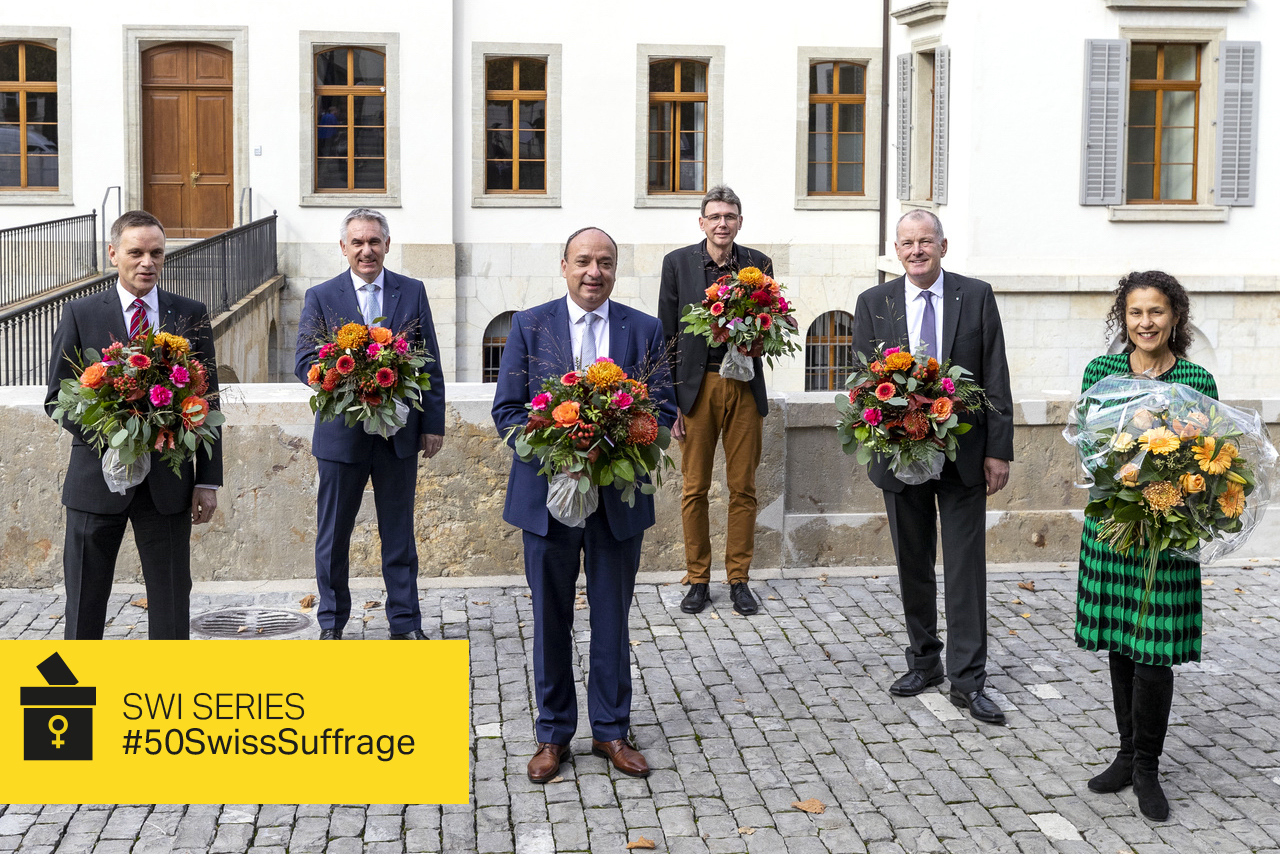
Elections 2023: Switzerland loses ground on women in parliament

Sunday’s federal elections resulted in a Swiss parliament that is not only more right-wing and less green but also more male.
At the last federal elections in 2019, the share of women candidates elected to the 200-seat House of Representatives surged by 10 percentage points to 42%.
This year the proportion slipped back to 38.5% and 77 seats, as the Federal Statistical Office said on Monday following the October 22 election. Final complete results for the 46-seat Senate are due by November 19.
On February 7, 1971, Swiss men decided in a public vote to let women have a say in the national politics. The federal elections on October 31, 1971, were the first in which women could vote as citizens or stand as candidates; 11 made it into the House of Representatives, giving women a proportion of 5.5%, and one woman took one of the 42 seats in the Senate.
Since then, progress towards equal gender representation in Swiss politics has been slow. At the federal level, this year’s decline in female participation in the House of Representatives ends a steady upward trend over the past few decades.
The fall in the number of women elected to the lower chamber this year can be explained largely by the composition of the electoral lists.
The victorious right-wing Swiss People’s Party is partly responsible for this downward trend. The party had proposed the fewest number of women candidates (25% on its lists). Following Sunday’s results, men occupy 50 of the 62 People’s Party seats (80%) in the lower chamber, and of the 21 new People’s Party faces in Bern, only three are women.
But the losses of the Green Party (-5 seats) and the Liberal Greens (-6 seats) were also a deciding factor behind the slide. Several of these losing seats were held by women.
Current events have also played a role, said Cloé Jans, a political scientist at the GfS research institute.
“The 2019 women’s election clearly had to do with the political issues,” she told Tages-AnzeigerExternal link newspaper. Equality and feminism dominated the headlines that year, thanks to the women’s strike. This year, however, the economy, war and migration, which traditionally have male connotations, dominated, said Jans.

More
Elections 2023: Swiss parliament shifts to the right
Alliance F,External link the Federation of Swiss Women’s Associations, insists the numbers must be put in perspective. It says progress is never linear and that a decline was expected after such a sharp rise in 2019.
“Women have come to parliament to stay. Sunday’s results show that Swiss democracy has become more robust in terms of gender representation. Despite the transfer of seats between parties, the proportion of women has not decreased as much as expected given the transfer of votes between parties,” Flavia Kleiner and Kathrin Bertschy, co-initiators of “Helvetia ruft!”, a campaign to increase women’s representation in parliament, toldExternal link the Le Temps newspaper.
The loss of female parliamentarians has been partly compensated by newly elected officials from The Centre and Social Democratic parties, said Kleiner.
It is interesting to note variations by language region, which reveal that 42% of female-elected parliamentarians are from German-speaking cantons, compared to 35% from French-speaking Switzerland and 13% from the Italian-speaking region.
Cantons Valais, Jura and Neuchâtel are “dragging down” the result for the French-speaking region, according to Flavia Kleiner. Jura and Valais elected no female parliamentarians this year. Neuchâtel chose only one (Céline Vara to the Senate).
How does Switzerland now compare internationally in terms of gender parity in parliament?
As a result of fewer women being elected to the House of Representatives, Switzerland has fallen out of the top 30 in the ranking of women in national parliaments, publishedExternal link every month by the Geneva-based Inter-Parliamentary Union.
Ahead of Sunday’s elections, Switzerland was 24th in the table, alongside Cape Verde, just behind North Macedonia and ahead of Ethiopia. The Alpine nation had risen to 15th place in 2019 but slipped back due to departures of women parliamentarians during the previous legislature.
At 38.5%, Switzerland will slide further down the ranking to 31st place, below Moldova but ahead of Australia.
Rwanda continues to hold the top slot, with over 61% of female politicians in its lower parliamentary chamber. It is followed by Cuba (55.7%), Nicaragua (51.7%), Andorra, Mexico, New Zealand and United Arab Emirates (which all achieve 50% parity).

More
Women in Swiss politics: still a long way to go

In compliance with the JTI standards
More: SWI swissinfo.ch certified by the Journalism Trust Initiative

































You can find an overview of ongoing debates with our journalists here . Please join us!
If you want to start a conversation about a topic raised in this article or want to report factual errors, email us at english@swissinfo.ch.